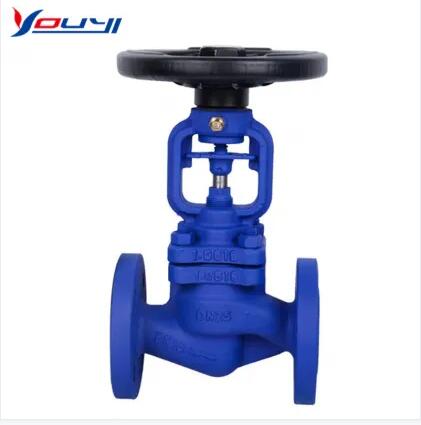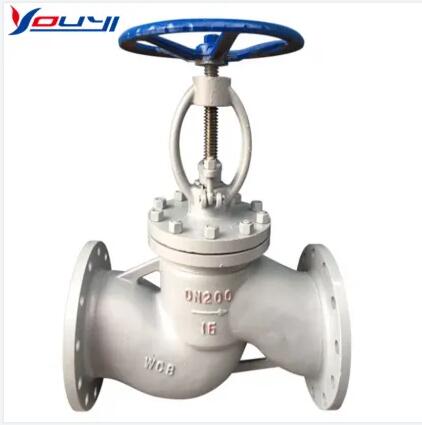Globe valves are operated with a handwheel and modulate water flow. But they also cause higher pressure loss.
Picking the right valve is important, as different types have different features and uses. Some of them only have two states: open or closed. Others allow fluid flow and pressure to be modulated. Distinct valves also cause different amounts of pressure loss. Depending on the situation, specific features are needed.
One of the most common types of valves is the globe valve. In this article we explain how a globe valve works, what a globe valve is and when to use one.
There are many different types of YOUYI globe valve, such as carbon steel globe valve, please contact us if you would like to contact for more information.

Carbon Steel Globe Valve
What is a globe valve, and how does it work?
To decide if a globe valve is right for your application, consider its three core features. First, they are lateral movement valves, which means they open or close based on the up-and-down movement of a stem. Second, they allow, stop, or throttle fluid flow. Some valves have only open and closed states, but globe valves can throttle flow without totally stopping it. Third, they cause significant head losses compared to other valves, a tradeoff for the throttling services.
How globe valves work
From the outside, globe valves have three parts, a handwheel, a bonnet, and a body. The bonnet houses a stem, and when the handwheel is turned, the stem screws up and down in the bonnet. The end of the stem has a small component called a disk or plug, which can be metallic or non-metallic and may come in different shapes, depending on the need.
The globe-shaped body for which the valve is named houses a seat. The seat is a metal frame that divides the body into two chambers and has a hole to allow fluid to pass. When the valve is open, fluid flows up through the opening in the seat. To close it, the stem is screwed down until the disk blocks the seat’s opening.
One of the main advantages of globe valves is their ability to throttle or modulate flow. Besides being closed or open, they can also be partially open. This allows you to adjust flow without totally stopping it.
The main disadvantage of globe valves is the comparatively significant head loss they create. Head loss, also called pressure loss, refers to the amount of resistance a liquid encounters as it flows through pipes. The more resistance, the more pressure that is lost. Gravity, friction (of the fluid against the walls of the pipe), and turbulence all cause this loss. Valves and fittings cause pressure loss mainly through turbulence.
Globe valves force fluid to change directions as it passes through, creating loss and turbulence. The exact amount of loss depends on factors like fluid velocity and friction factor. However, it’s still possible to review the pressure losses from different valves using a metric called the L/D coefficient.
A valve’s L/D coefficient lets us compare it to a straight section of pipe with the same friction factor. L and D stand for length and diameter, respectively. A valve with L/D=5 creates the same friction loss (all else being equal) as a section of pipe with a length-to-diameter ratio of 5. The larger L/D is for a component, the higher the head loss it creates.
A standard globe valve has an L/D=340, compared to an L/D=30 for a 90-degree pipe elbow.

Carbon Steel Globe Valve
When to use globe valves
Globe valves are ideal whenever you need to modulate flow, but you don’t have to worry about the amount of pressure loss. Some applications include:
Cooling water systems
Fuel oil systems
Feedwater and chemical feed systems
Turbine lubricating oil systems
Drain and trim applications in fire sprinkler or other water-based fire protection systems
Globe valves aren’t the best choice for control valve applications in fire sprinkler systems, where pressure is at a premium. Instead, butterfly valves are commonly used.
Please contact us if you would like to contact for more information!
Copyright:@2020-2021
Comments Please sign in or sign up to post.
0
0 of 500 characters used